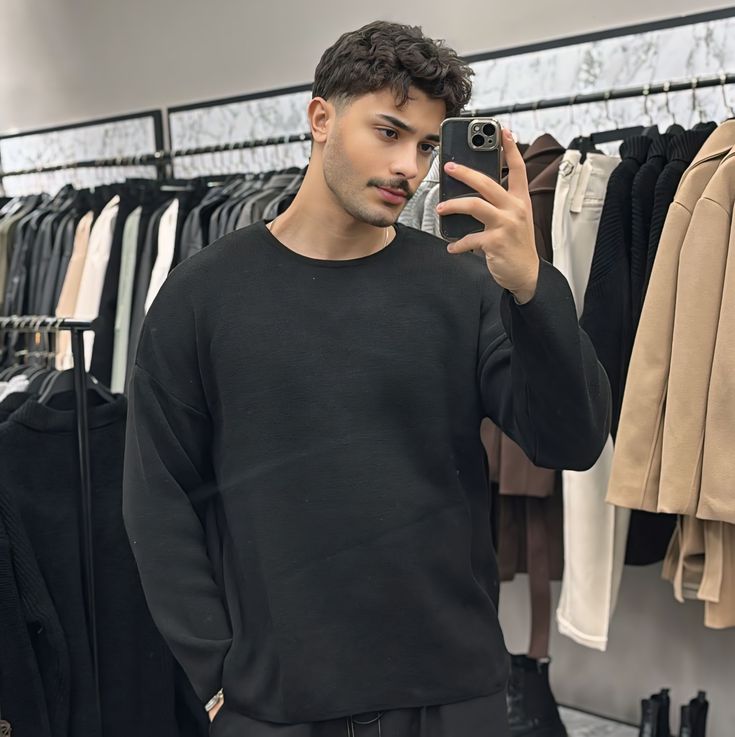Introduction
In a world increasingly driven by social connection and digital expression, fashion has evolved beyond aesthetics. It now acts as a dynamic reflection of identity, beliefs, and generational sentiment. Youth today aren’t merely following trends—they’re shaping them. The phrase “Outfits as Outlooks” captures the essence of how fashion reflects inner worlds, especially among younger generations who seamlessly blend personal expression with global cultural cues. This article explores how youth sentiment forecasts fashion’s trajectory, how emotions become silhouettes, and how outlooks take the form of outfits.
The Rise of Emotionally-Driven Fashion
Fashion has always been an emotional language, but today’s youth have elevated that dialogue into a public conversation. Through platforms like TikTok, Instagram, and Threads, young consumers externalize their internal states via curated outfits. Anxiety takes the form of oversized hoodies and soft textures; confidence beams from bold colors and structured cuts. Clothing is no longer passive—it speaks, signals, and sometimes even screams. Gen Z and Gen Alpha approach style with an emotional intelligence that prioritizes feeling as much as form.
Cultural Fluidity and the Demise of Fixed Aesthetics
One of the defining features of youth-led fashion in the 2020s is its resistance to fixed identity categories. Instead of subscribing to rigid aesthetics, young people experiment with hybridity. A single outfit may merge cottagecore, Y2K, and cyberpunk elements. This fluidity stems from a globalized media landscape and a value system rooted in personal freedom. Youth today resist singular definitions. Their outfits are visual essays, layered with references, contradictions, and bold reinterpretations. Fashion becomes a living archive of fluid identity.
Sustainability and Conscious Sentiment
Youth sentiment is increasingly defined by ecological awareness. Climate anxiety translates into action—via fashion choices. The boom in thrifting, upcycling, and slow fashion isn’t a niche subculture but a dominant narrative. Gen Z views sustainable fashion not as a compromise but as a stylish, innovative frontier. Brands that resonate most are those aligned with values: ethical sourcing, transparency, circular production. Here, fashion isn’t just worn—it’s wielded. A vintage denim jacket isn’t just retro; it’s a protest, a promise, a point of pride.
Digital Natives and Virtual Styling
As digital natives, today’s youth live in both physical and digital spaces. Fashion now operates in augmented realities and social feeds as much as on sidewalks. Virtual wardrobes, avatar skins, and AI-generated outfits contribute to a new frontier of expression. Youth use these tools to shape identities that may or may not align with offline personas. Whether it’s a hyperpop-inspired Roblox look or a curated Instagram fit-check, digital style is real style. Emotional authenticity thrives in these constructed spaces, and outfits become curated emotional landscapes.
Microtrends, Meme Culture, and Hyper-Acceleration
Youth fashion is no longer seasonal—it’s instantaneous. Thanks to TikTok cycles and microtrend virality, what’s in today could be over next week. The rise of meme culture has only fueled this hyper-acceleration. However, rather than diminishing creativity, this pace invites innovation. Young people remix, parody, and deconstruct fashion norms in real-time. Their sentiment isn’t nostalgic—it’s adaptive. They embrace irony, humor, and contradiction to produce looks that are both ephemeral and deeply expressive.
Fashion as Protest and Personal Politics
For youth, fashion is political. Not in a traditional sense, but in how it asserts identity, belonging, and resistance. A T-shirt printed with a social message, a Palestinian keffiyeh, or a rainbow flag pin—these are more than style choices; they are visual ideologies. Young people dress not just for themselves but for the communities they support, the causes they champion, and the futures they imagine. Clothing thus becomes a tool for visibility, solidarity, and silent revolution.
Gender Fluidity and Queer Aesthetics
Another key sentiment shaping youth fashion is the rejection of binary gender norms. Androgyny, fluid silhouettes, and queer aesthetics dominate streetwear, runways, and retail spaces. Clothing is no longer labeled by gender but by vibe, emotion, and intent. Youth express the multiplicity of their identities through garments that flow beyond traditional categories. A skirt is not for women; it’s for whoever feels powerful in it. This liberation redefines not just fashion but the very concept of presentation.
The Personalization of Everything
Customization is central to the modern fashion experience. Whether it’s through hand-painted sneakers, patchwork denim, or digital filters, youth are asserting ownership over how they appear. Algorithms may feed trends, but the individual response remains unique. From AI-personalized shopping experiences to DIY embellishments, the goal is singularity. Youth are not seeking uniformity—they’re constructing uniqueness. Their outfits aren’t off-the-rack—they’re off-the-heart.
Conclusion
Youth sentiment is the compass guiding the fashion industry’s evolution. From emotional resonance and digital duality to ecological responsibility and personal politics, today’s young consumers are redefining what fashion means and what it does. Their outfits aren’t just clothes—they’re conversations, declarations, and forecasts. In the coming decade, to understand youth fashion is to understand the future. Because more than ever, outfits are outlooks—and youth are the designers of tomorrow’s emotional landscape.



